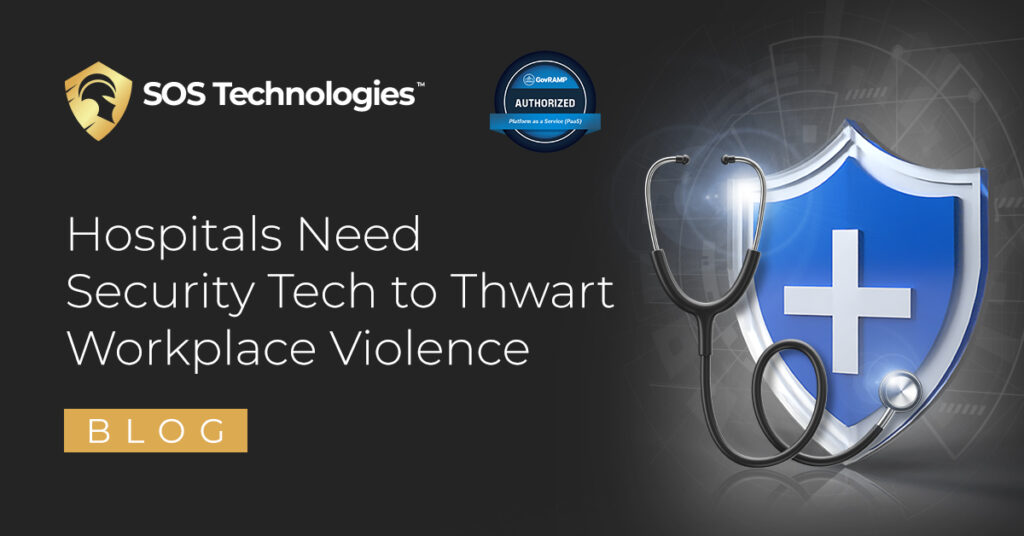
SOS Technologies CEO Travis Leonardi was recently the guest on The Tate Chronicles podcast to discuss workplace violence and security systems in hospitals when host Jim Tate brought up his brush with violence against healthcare providers.
“I was working at a large pulmonary practice,” said Tate, a veteran of health IT. “Half a block away was a cardiology practice, and during lunch, we heard three loud bangs. Somebody had walked in to confer with a cardiologist — there’s somebody in their family who had died, and they wanted to follow up with the cardiologists. They killed him and barricaded themselves in the room.
“So we heard those three bags, but it was over 10, maybe 15 minutes before we heard the sirens, and this person was in there with a gun, barricaded.”
Leonardi, a pharmacist by training who spent most of his career working in healthcare, discussed the fragmented nature of hospital security systems, the three units where violent acts most often occur, and how the SmartSOS platform helps by relying more on technology and automation than having security guards stationed at every threat point.
He also referred back to Tate’s tragic story to highlight the necessity of reducing dispatch times.
“That’s the issue: 911 was never set up for situations that needed seconds’ response,” Leonardi said. “You know, they have to respond in seconds. What happens in one minute with an individual with a semi-automatic weapon? … He’s got a lot of time to hurt a lot of different people. So you can’t say 15 minutes is enough. It’s not … It’s craziness to talk about minutes when seconds count.”
Leonardi and Tate also discussed:
- Workplace violence is overwhelmingly concentrated in healthcare, with 73% of all such incidents occurring in hospitals. This high prevalence means that workplace safety has become the primary concern for healthcare employees like nurses and other floor staff when seeking employment, even outweighing salary or health insurance.
- Within hospitals, the areas most frequently experiencing escalating violence, typically from patients, former patients, or their families, are psychiatric units, emergency departments (EDs), and the billing department. These incidents often involve physical aggression, sometimes with weapons, leading to staff losing days of work.
- Healthcare facilities are inherently “soft targets” due to their open access, lacking measures like metal detectors or bag checks. The traditional 911 system is not designed for the second-level response needed during violent incidents, as evidenced by situations where sirens may arrive 10-15 minutes after a shooting begins, leaving staff vulnerable.

